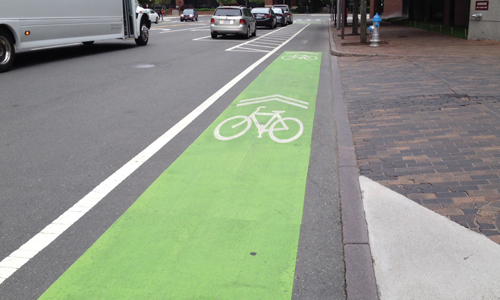Safer Cycling
Funding Source: Safer Sim
Title: Development and Evaluation of Infrastructure Strategies for Safer Cycling
Date:
Status: Completed
Summary: Due to the wealth of information around the personal and societal benefits of increasing cycling infrastructure in a city or town, as well as the research detailing specific barriers to cycling (personal and societal), this project will have a different, more practical focus. While conducting a thorough review of existing literature will be part of this work, the true aim of this research project is to develop and evaluate a series of both traditional and innovative strategies aimed at improving bicycle related infrastructure. As shown in the literature, the optimal strategy for expanding and broadening the way that decision makers conceptualize the built environment is to experiment with different designs and then evaluate the results. While this kind of risk is generally too great for policy makers, planners and engineers working with a shrinking budget, it is the opportunity and role of the researcher to think big and to take new leaps. Given the experimental nature of new and innovative bicycle related infrastructure, coupled with the need to understand the impact of these design concepts on driver-related behaviors, the employment of driving simulator technology is the perfect mechanism for evaluating these strategies. Because the project will occur in a simulator environment where the ability exists to measure standard driver responses (e.g.: eye movements, lateral positioning, speed maintenance, etc.) in a myriad of virtual conditions, multiple strategies and variations of strategies can be evaluated in a cost effective manner. The overall objectives of this research and contribution to the literature will be twofold: 1) review of existing, and development of new infrastructure related elements for improving the accommodation of bicycles within the built environment; and 2) an improved understanding of driver behavior responses associated with bicycle-related infrastructure elements.


